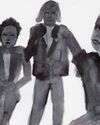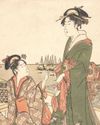
IN THE EARLY 21st century — a decade into the experiment of the public internet, which was introduced in 1991, and with Facebook and Twitter not yet glimmers of data on the horizon — a new phrase slipped into Chinese slang: renrou sousuo, literally translated as “human flesh search.” The wording was meant to be whimsical, suggesting the human-powered equivalent of what were then fairly novel computer search engines. (In English, the nuances are lost; no zombie inflection was intended.) A request would go out for wangmin (web citizens), or in this case the more intimate wangyou (web friends, internet users sharing a common passion or cause), to come together as a kind of ad hoc detective agency in order to ferret out information about objects and figures of interest. It was just an outlet for fandom. But soon attention turned toward supposed wrongdoers, those thought to exhibit moral deficiency, from a low-level government official spotted flashing a designer watch far above his pay grade, hinting at corruption, to, more horrifically, a woman in a “crush video” — a fringe genre of erotica that traffics in animal cruelty — wielding stilettos to stomp a kitten to death. Once these offenders were identified and their personal details exposed online, they were hounded, verbally flogged and effectively expelled from the community.
Denne historien er fra January 2021-utgaven av T Singapore: The New York Times Style Magazine.
Start din 7-dagers gratis prøveperiode på Magzter GOLD for å få tilgang til tusenvis av utvalgte premiumhistorier og 9000+ magasiner og aviser.
Allerede abonnent ? Logg på
Denne historien er fra January 2021-utgaven av T Singapore: The New York Times Style Magazine.
Start din 7-dagers gratis prøveperiode på Magzter GOLD for å få tilgang til tusenvis av utvalgte premiumhistorier og 9000+ magasiner og aviser.
Allerede abonnent? Logg på

Look At Us
As public memorials face a public reckoning, there’s still too little thought paid to how women are represented — as bodies and as selves.

Two New Jewellery Collections Find Their Inspiration In The Human Anatomy
Two new jewellery collections find their inspiration in the human anatomy.

She For She
We speak to three women in Singapore who are trying to improve the lives of women — and all other gender identities — through their work.
Over The Rainbow
How the bright colours and lively prints created by illustrator Donald Robertson brought the latest Weekend Max Mara Flutterflies capsule collection to life.

What Is Love?
The artist Hank Willis Thomas discusses his partnership with the Japanese fashion label Sacai and the idea of fashion in the context of the art world.

The Luxury Hotel For New Mums
Singapore’s first luxury confinement facility, Kai Suites, aims to provide much more than plush beds and 24-hour infant care: It wants to help mothers with their mental and emotional wellbeing as well.

Who Gets To Eat?
As recent food movements have focused on buying local or organic, a deeper and different conversation is happening among America’s food activists: one that demands not just better meals for everyone but a dismantling of the structures that have failed to nourish us all along.

Reimagining The Future Of Fashion
What do women want from their clothes and accessories, and does luxury still have a place in this post-pandemic era? The iconic designer Alber Elbaz thinks he has the answers with his new label, AZ Factory.

A Holiday At Home
Once seen as the less exciting alternative to an exotic destination holiday, the staycation takes on new importance.
All Dressed Up, Nowhere To Go
Chinese supermodel He Sui talks about the unseen pressures of being an international star, being a trailblazer for East Asian models in the fashion world, and why, at the end of the day, she is content with being known as just a regular girl from Wenzhou.